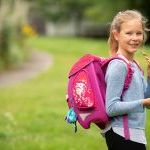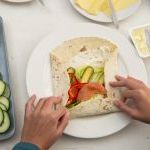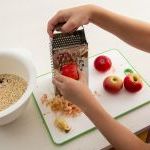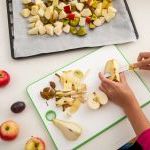Snack Kitchen
In Austria, it is common for children to bring a school snack in from home. The quality of these snacks can vary greatly. The primary school International School St. Pölten is taking a different approach to snacking. A "snack kitchen" has been set up at the school. Pupils produce school snack for themselves, or for the whole class. In addition to getting a high-quality school snack, the pupils build up know how in dealing with food and its preparation. Preparing and enjoying the snack together offers endless opportunities for experiences and learning. Additionally, those who prepare the snacks themselves appreciate the result even more.
Website
International School St. Pölten
Country
Media
Photographs by Rita Newman
UK Useful links:
Washingborough Academy in the UK also run a 'snack shack' where pupils help make healthy snacks.
* TOP TIP*
Work with children to create easy recipes for tasty snacks
How is the project linked to climate change & sustainability?
Knowledge about the origin of food, as well as the development of cooking skills makes children more aware of the food industry and strengthens their autonomy. In a snack kitchen school where the children prepare their own snacks on site, there is less packaging waste and less food waste. The pupils develop a greater appreciation of food.
Who is involved?
Pupils, teachers, parents, after-school caretakers and local authorities are all involved in the project. Gutessen Consulting have been supporting schools with the Snack Kitchen project. Gesundheitsvorsorge GmbH has provided financial and organisational support. The project is co-funded by Fonds Gesundes Österreich.
How are the participants involved?
Pupils prepare the snacks under the supervision of their teachers. All classes get a classroom-snack kitchen which is a box with all of the nessecary equipment required for preparing the snacks. There is a snack plan with different options.
The options are:
- Two or three pupils in the class prepare the snacks, under supervision of the teacher, for their own class. They work according to step-by-step photo instructions and recipes.
- One class of the school prepares the snacks for the whole school.
- Each child brings their own snack in from home. The parents receive a recipe booklet to help prepare healthy snacks.
- Parents come in and prepare the snacks for the whole school.
- After-school caretakers prepare the snack for the next day with their groups.
Pupils test different recipes and the collection of step-by-step-recipes is available for primary schools in Lower Austria. Schools are encouraged to grow in their school and to use what they have grown in the snacks. Parents are kept up to date with the project and are encouraged to support children in cooking and gardening at home.
Key steps
- Work with the children to design some easy to prepare and tasty snacks
- Plan what will be needed in the school kitchen to prepare the snacks
- Run your session early in the morning so that snacks are ready to be distributed for the morning break.







